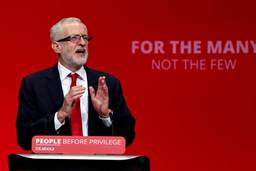Spoiler Alert, Connecticut: Jon Pelto Says He Isn’t One
Meet the blogger and former legislator who just might be incumbent Governor Dan Malloy’s worst enemy.
Cole Stangler

At first glance, Jonathan Pelto seems like another run-of-the-mill Democrat — a time-tested party loyalist. He was first elected to the Connecticut State House in 1984 — his senior year at the University of Connecticut — where he served until 1993. During that time, Pelto worked as political director of the state party; after leaving the Capitol, he made a living as a high-profile liberal political consultant. In recent years, however, Pelto has explicitly concentrated his energies on reform: He has emerged as one of the state’s most prominent left-wing critics of Democratic Governor Dannel Malloy, elected in 2010.
On his highly trafficked blog “Wait What?” Pelto regularly serves up acerbic columns interrogating Malloy’s stances on a variety of subjects, including education reform, taxes, labor relations and budget cuts. “Jon Pelto,” the anti-corporate education reform crusader Diane Ravitch recently proclaimed on her own blog, “is standing up for teachers and parents and everyone else who is not in the 1%.”
On June 12, Pelto announced he was running for governor under the self-created Education and Democracy Party ticket. He and his running mate Ebony Murphy need to collect a minimum of 7,500 signatures by August 6 in order to appear on the ballot; they expect to reach that goal.
The major unions — the state AFL-CIO, Connecticut’s SEIU locals, even the American Federation of Teachers-Connecticut—have all endorsed the incumbent Democrat. (“I love Jon Pelto and am supporting Gov. Malloy,” tweeted AFT President Randi Weingarten last month.) The Connecticut Working Families Party is expected to follow suit when the state committee makes its final decision, which likely won’t be until August.
Speaking to In These Times on the phone last week, Pelto says he’s frustrated by the lack of official endorsements, but insists he’s committed to the campaign. This interview has been abridged and edited.
Why are you mounting a challenge to Dan Malloy?
I supported Dan Malloy. I worked with Dan Malloy. But when he was sworn in as Dannel Malloy, he reversed course on a lot of policies.
In Malloy’s first year, for example, he really went after state employees. What really changed my mind about his work, though, was when he became a huge advocate of the corporate education reform industry. He is the only Democratic governor to introduce a plan to do away with teacher tenure, which he did in February 2012. At that point, my blog really shifted to focusing on education issues and the education reform effort.
That was a key topic, although there were many others. What was clear was that Malloy had no intention of pivoting leftward on a variety of things I perceived to be major issues.
What are those issues?
The privatization of public education was number one.
Number two is tax policy. When Governor Malloy introduced a $1.5 billion tax package to balance the budget in 2011, he said to a joint session of the House and Senate that he didn’t want to raise taxes more than 0.2 percent on those making over $1 million because he didn’t want to “punish success.” The taxes he have issued have disproportionately affected the middle class. We have the highest gas tax in history; the sales tax is fairly narrow and hits a lot of people in the middle-class and working families. We’ve created a perfectly regressive tax structure.
Number three is that Malloy has pushed through the biggest cuts in Connecticut history to our public colleges and universities.
Number four, he is — for lack of a better term — a fan of these corporate welfare programs that give nearly $1 billion in state funds, either in tax breaks or low-interest loans, to major companies. The most famous of these is Bridgewater, the largest hedge fund in the world. Its CEO, Ray Dalio, was paid $3.9 billion three years ago, and made $3 billion last year. Malloy offered Bridgewater $115 million in incentives if it agreed to move to downtown Stamford. He gave ESPN $25 million for a new studio, even though the studio had already been built. He gave more than $50 million to CIGNA Corp. to move their headquarters from Pennsylvania back to Connecticut. Malloy has been a real aficionado of giving money to companies with the promise that they create jobs over the course of 10 years.
And finally, Connecticut used to have the best campaign finance law in the country. But Malloy and the Democrats have really cut back its effectiveness by creating massive loopholes that allow for lobbyists and PACs — and even state contractors — to give money to candidates.
Why not run as a Democrat like Zephyr Teachout in New York?
In Connecticut, it would have been, in my mind, impossible to win a Democratic primary.
My fear was that Malloy would win and claim that those issues were not as important, because he won by 70-30 to win the Democratic primary. Running as a third party ensures that once you get on the ballot, you get to be heard all the way through the process.
In campaign management, we look at the percentage of people who want to reelect the incumbent. The highest that Malloy’s ever gotten was 46 percent. Compare that to Andrew Cuomo, who has a 54 to 60 percent, depending on the candidate: Malloy is on the ropes anyway.
In the polls that have been conducted so far, you’re not showing up. They’ve shown a very small percentage of people chose the option of somebody other than Malloy or Foley. Do you really think you have a chance of winning this election? And if you don’t, what’s the point of running?
These questions weigh heavily on me as I’ve thought about the issues, and I have to say my answer has changed a little bit over time. I stuck with the line — “I would only run if I was a credible candidate. I wouldn’t run simply if I was a spoiler.” But credible is a relative term. The goal is to win, but it’s also to impact the debate on what it means to be a Democrat and the corporatization of government. And the best way to do that was to run as a third-party candidate.
I think I am already having an impact on the debate. I was an opponent of the Common Core, for example. The only one left in the field [of potential candidates] who still supports Common Core is Malloy. All the other candidates have pledged to do away with Common Core if they’re elected and that has happened, in part, because of my positioning in the debate.
The idea of a credible candidate is one that can have an impact, and I believe that we are and we will have a significant impact on the race.
Do you think you can win this race?
I think there is a scenario, an outside chance, particularly in a four-way race. This guy Joe Visconti is also collecting petitions [to run for governor]. [In 1990], Lowell Weicker won with 40 percent of the vote as an independent candidate for governor. It was different; he was well-known and well-financed. And coming from the Republican side, John Rowland became governor in 1994 with 36 percent of the vote. Is there a scenario where I can get 35 or 36 percent of the vote? Yes, I think there is.
You’re regarded as something of a spoiler candidate. The former Senator Joseph Lieberman has compared you to Ralph Nader. The political director of the eastern states conference of Machinists made the same case—that you’re a spoiler siphoning off votes from the Democrats. The alternative to Dan Malloy is Tom Foley, who is this viciously right-wing hedge fund guy, who’s made no secret of his admiration for the policies of Wisconsin Governor Scott Walker. What do you make of those spoiler charges?
I have two different but parallel responses, the first is that this is not Wisconsin.
So Tom Foley famously said Connecticut needs a “Wisconsin moment.”
Yeah, we don’t know much about Foley. He’s not a Teabagger. On the other hand, he said that.
But more importantly, thanks to gerrymandering in 1990, 2000, and 2010, Connecticut will remain Democratic for generations to come, so there will be a Democratic legislature — unlike in Wisconsin where you had a [Tea Party] governor and [Tea Party]-controlled House and Senate. Here we will have a Democratic legislature. And it did its job. For example, when Malloy introduced a bill that did away with tenure, the Democratic legislature stripped it of that provision. The idea that Foley would make Connecticut the next Wisconsin is just fearmongering and just not true.
Now, would Foley be worse than Malloy on some issues? Undoubtedly he would. But on education, I don’t think we could get much worse than Malloy. He is anathema to everything we Democrats, liberals, and progressives [stand for].
The fact is that Dan Malloy, at any point, could have addressed the concerns of educators and the middle-class people who are against corporate welfare and he chose not to. It’s not like these are issues that they would agree with him on — it’s just that the union leadership has said, “Suck it up and vote for him because the alternative is worse.” My feeling is that if there is a spoiler in this, it’s Dan Malloy for not being willing to come to the base of the Democratic Party and the people of Connecticut and address their concerns.
The Education and Democracy Party you are running with, is that a vehicle that will last beyond this campaign? Do you see this as building any long-term political power or is it just focused on this one campaign?
I think that’s yet to be seen. Watching the Democratic Party, I’m convinced that big segments of it have moved away from its base. Here in Connecticut, the leadership of the Democratic Party is not speaking out about representing the middle class, it’s not speaking out for teachers and higher education; it’s so aligned with corporate interests.
If this battle ends up with the Democratic Party retrenching into its own corporate approach, then I’d see the Education and Democracy Party as a long-term effort to provide an alternative to the Democratic Party or to elements within it. I’m not opposed at all to using this as a vehicle towards long-term change.
Let’s say you get 5 percent of the vote, or something that’s greater than the margin of victory for Tom Foley and Malloy loses. Is there a certain amount of success in something like that, where you’re sending a message to Democratic leadership? Do you see that as a positive thing?
I wouldn’t be running if I wasn’t comfortable with the fact that that might be an outcome. I feel strongly enough about these issues. After campaigning and talking to many people, lots of other people feel strongly as well.
While I’d like to do more than that — get more than 4 or 5 percent of the vote — and I certainly do not want to throw the election to a Republican, I feel comfortable with that outcome. I feel comfortable that I will be able to impact the system and impact the debate in a positive way, regardless of whether I win or not.








